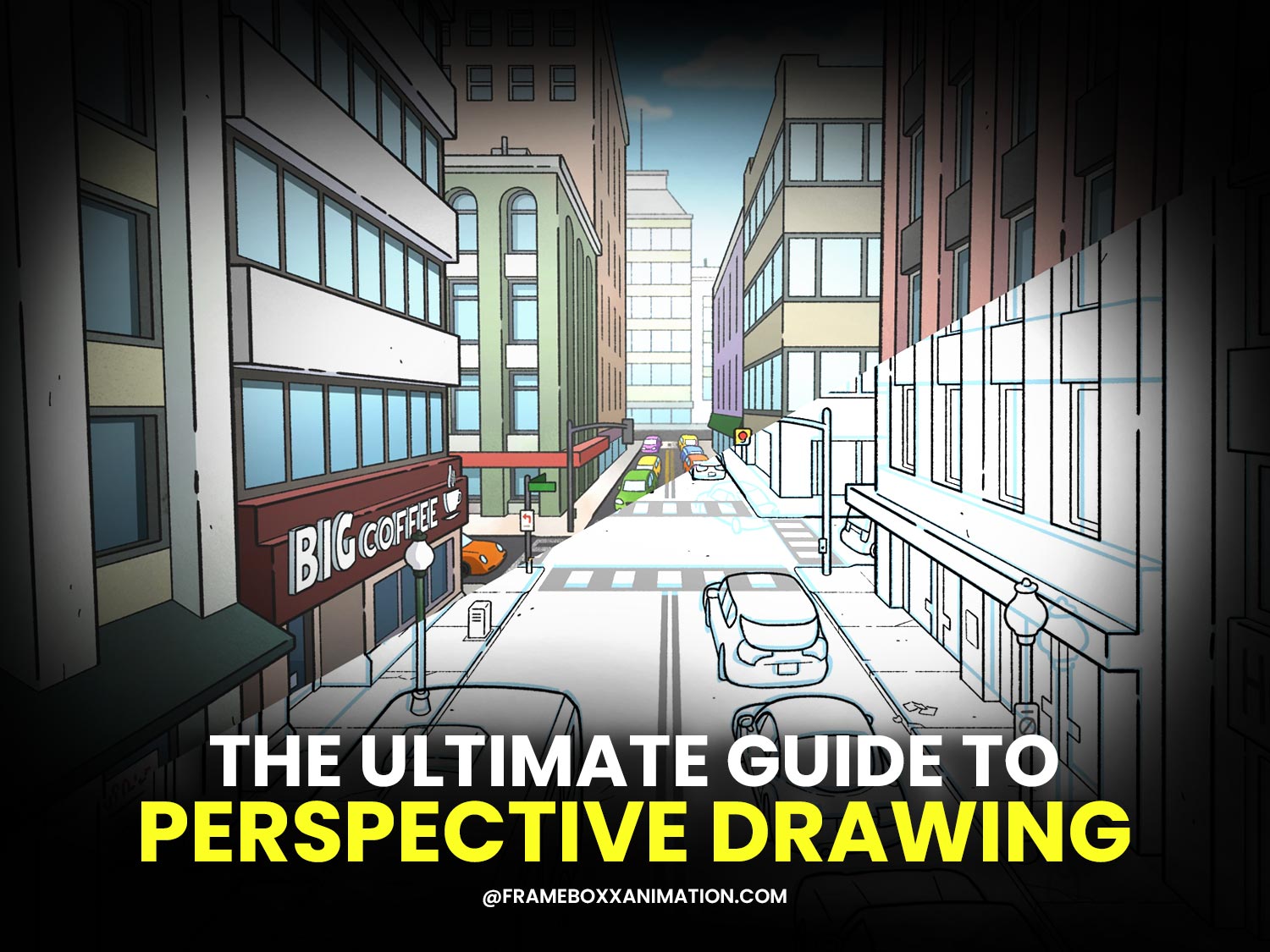Initiating your journey as an artist can be daunting without proper guidance. It can be both inviting and challenging for a few. One fundamental skill that forms the backbone of any artist’s toolkit is Perspective Drawing.
Perspective Drawing is an essential element of trying to capture its essence. This technique allows us to create dynamic and realistic imagery on the paper/canvas plane. Everything we observe in real life exists in 3 dimensions.
However, our challenge as artists is to capture the three-dimensionality onto our two-dimensional plane.
In this blog, we will dive into the basics of perspective drawing, the concept of vanishing points, and other important terminologies. Get ready, fellow artists as we get along on the journey.
What is Pre- Production?
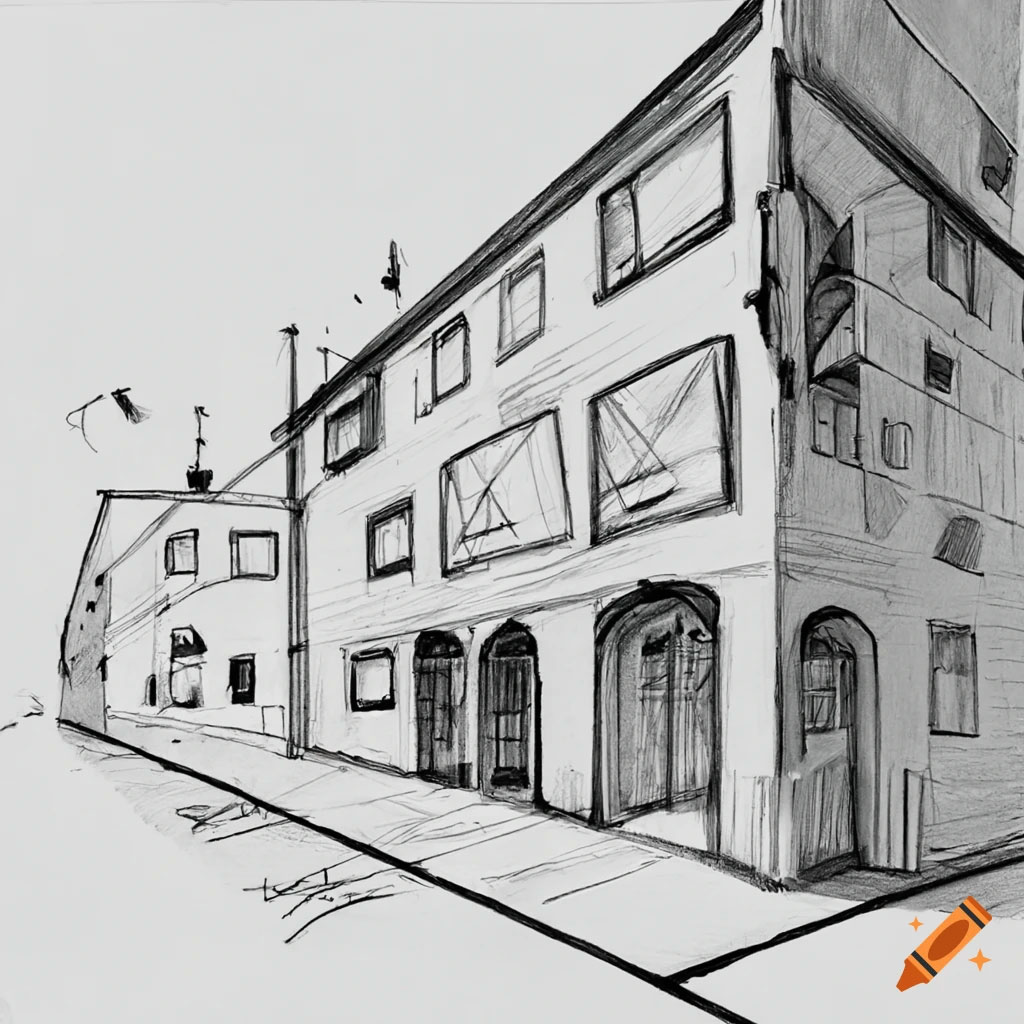
Pre-production is an early stage of any project, including commercials, music videos, short films, and feature films. This crucial step defines how efficient, organized, and, ultimately, how successful the production stage will be.
Pre-production starts from ideation and then sketching the scenes out. Perspective Drawing serves a crucial role in pre-production.
In the scenes where environment is the most prevalent element of the scene, Perspective plays a huge part in conveying the important information to the viewer.
Establishing a strong foundation in perspective drawing will pave the way for a more successful career in the industry.
Learning perspective is a great way to invite depth and dimension into your sketches. This allows the viewer to dive deep into your story. This is an inevitable skill if you want to pursue a career in the pre-production area of the industry.
Storyboard artists are in high demand, as the world is moving closer to a digital universe in a multitude of ways.
What is Perspective Drawing?
At its core, perspective drawing is a technique used to create the illusion of three-dimensionality on a two-dimensional plane/ surface.
By two-dimensional, we mean, A paper that has height and width as its components except height/ depth.
A three-dimensional surface has three components,
Height, width and depth respectively.
Earlier, we were taught about LxBxH in mathematics.
Where L= Length
B= Breadth
H= Height
Similarly, as artists, we are responsible for capturing and/or creating the illusion of depth, scale, and proportion on the paper.
This method mimics how objects appear in reality, taking into account the convergence of lines and the way they recede into the distance to create depth.
Terminologies in Perspective Drawing:
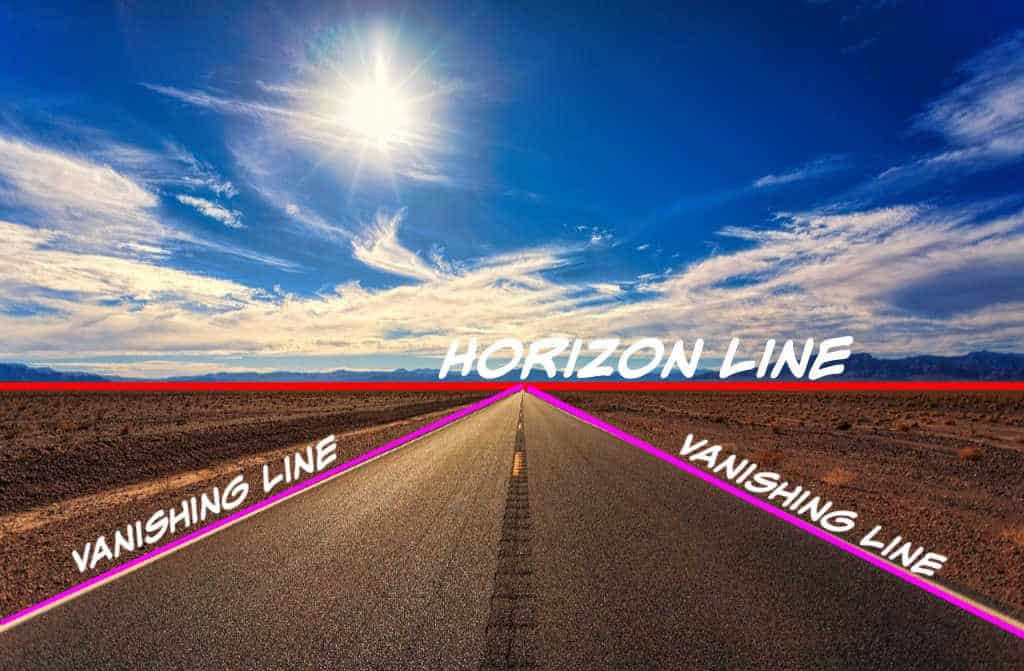
1) Horizon Line:
The horizon line is the fundamental line in perspective drawing. As you might’ve noticed, when the sun sets, it sets at a certain point where the sky meets the ground.
The horizon line refers to the line where the viewer’s eye level meets the ground plane. In most cases, the viewer’s eye level is the same as the horizon line.
The first step is to establish a horizon line in your scene. This already gives you a headstart to establish the depth.
2) Vanishing Points:
A point where every element diminishes to create an illusion of depth is called a vanishing point. Perspective drawing for the sake of convenience, has been divided into 3 categories based on Vanishing Points.

The main categories are:
- One-Point Perspective
- Two-Point Perspective
- Three-Point Perspective
- Multi-Point Perspective
- Atmospheric/ Aerial Perspective
Vanishing Point is a converging point on the horizon line where parallel lines seem to converge.
Contour Lines:
Contour lines are referred to the outlines of the objects in the scene. They help convey form in the perspective. Contour lines can also be used to convey the lighting scenario in the scene. The lines/ areas of the object away from the light, are drawn darker and bolder to create a subtle shadow effect.
Contrastingly, The lines facing the light are usually drawn thinner and sleek, representing the highlights. Sometimes, the lines are omitted in certain spaces to mimic the effect of the highlights of the object.
Line Quality
Line quality is such an important topic in drawing but often remains untouched. Line quality refers to the characteristics used in drawing, such as their thickness, darkness, and depth.
The variation in strokes gives an extra edge to the drawing. Your drawings look crisp and clean. You can imitate the feeling of dynamism even without an actual light source.
Experimenting with different line weights can help define the three elements of a scene:
- Foreground
- Midground &
- Background
This adds a visual hierarchy to the scene without making it obvious.
Types of Perspective:
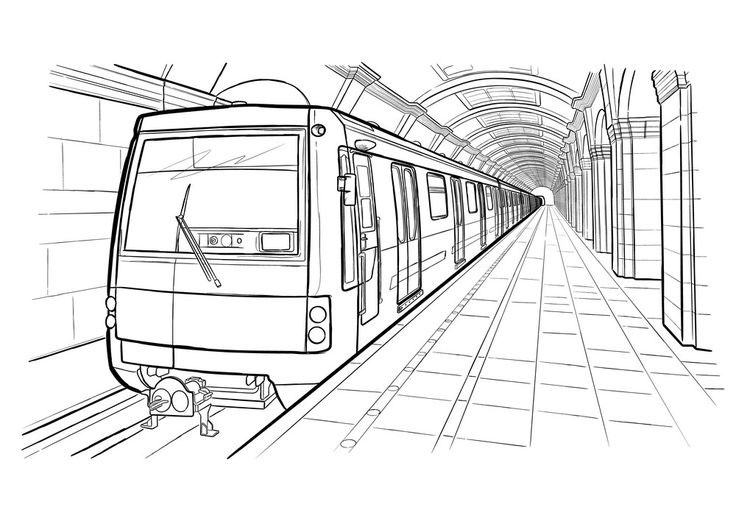
1) One Point Perspective:
One point perspective has one vanishing point and one horizon line at its core. All parallel lines converge at one single point on the horizon. This is used when drawing a scene in a more straightforward, frontal view. One-point perspective is often used for scenes with a strong sense of depth and simplicity.
Ever observed? Rail tracks from the center. You might’ve observed that it appears the rail tracks are converging to one single point somewhere in the distance. In this case, drawing the scene from one one-point perspective is the best way to create the illusion of depth.
2) Two-point Perspective:

Two-point perspective has two vanishing points on the horizon line. Remember, the vanishing points need to be far away from each other to signify the actual scale of objects.
This technique is commonly used to describe buildings and other objects often viewed from a distance. The convergence of lines to two vanishing points adds depth and dimension to the overall scene.
3) Three Point Perspective:
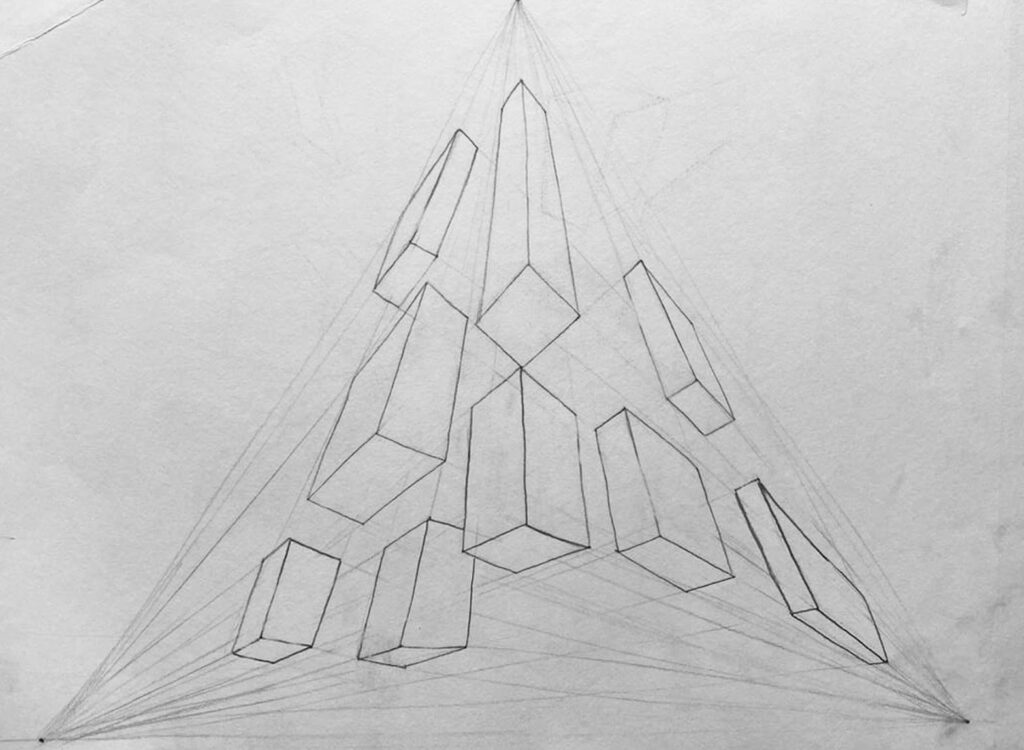
Three Point Perspective, as you can guess, includes 3 vanishing points. Two vanishing points are placed on the horizon lines, and the other third vanishing point is on either side of the horizon, either up or below the horizon line.
This concept is mostly used for harsh and extreme angles, emphasizing height and depth in the drawing. It is used to create dynamic and drastic compositions, such as towering skyscrapers or deep canyons.
Looking Up and Looking Down:
The scene in the camera is the viewer’s point of view. What the camera sees, is what we depict in the scene. Looking up the perspective is often used in cinematography, it denotes where the camera is placed.
If we say, the camera is looking up, it means, the camera has been placed below the horizon line and is looking up at the subject.
This translates in the drawing as The horizon line is above the camera, which means, the camera is looking up. Simply, the camera can see the bottom plane of the subject.
Contrastingly,
If we say the camera is looking down. That means, we can see the top plane of the subject and that the horizon line is way below the camera. The camera has been placed on top so that it watches over the subject and sees the top plane of the subject.
Conclusion:
Perspective Drawing is a vital skill for any newbie artist. By understanding the concepts and techniques of perspective, line quality, types of lines, and lighting concepts, you can bring life to your drawings.
Perspective Drawing is a vast topic on its own, let alone the various subtypes. Expanding to its depths is beyond the scope of this blog as of now. Artists that are keen on enhancing their drawing and sketching skills, can enroll in our premium courses at Frameboxx Animation Institute Ahmedabad
We at Frameboxx Animation Institute stand as a beacon for all those looking to dive into the world of animation, VFX, Game Art, and more. We are proud to provide strong foundational skills to our students. You can be one of the strongest artists in the industry.
Whether pursuing a serious career in animation or simply honing your artistic skills, the knowledge at Frameboxx will undoubtedly set you up for brilliant success in the future.
Until later!
Keep Creating!
For more information on our courses:

